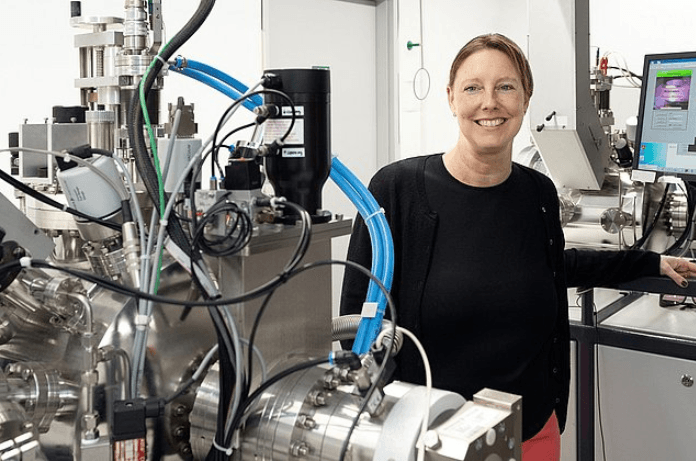The future of energy storage is unfolding in Bavaria, where a groundbreaking research hub the SolBat Center is being established. With the combined efforts of the Technical University of Munich (TUM), the Max Planck Society (MPG), and support from the Bavarian Ministry of Economic Affairs, this center is set to lead innovations in solar batteries and optoionic technologies. By merging cutting-edge science with sustainable energy solutions, the SolBat Center aims to revolutionize how we store and use solar energy. They combine solar cells and batteries into one component, allowing them to store energy from sunlight directly in a chemical form, without the deviation of converting it into electricity.
Solar Batteries: A New Frontier in Energy Storage
At the heart of this innovation are solar batteries, a largely untapped technology that integrates solar cells and batteries into a single component. Unlike traditional systems that convert sunlight into electricity before storage, solar batteries chemically store sunlight directly, bypassing energy losses. This unique design enhances efficiency, compensates for weather-related fluctuations, and improves overall energy utilization.
A key aspect of solar batteries is their ability to accelerate ion movement such as lithium or oxygen ions via optical stimulation, enabling faster charge and discharge processes. This combination of light absorption and energy storage within a single unit minimizes losses seen in conventional systems and opens up possibilities for off-grid, flexible light storage systems.
The Revolutionary Role of Optoionics
Central to the SolBat Center’s mission is optoionics, an emerging field that fuses optoelectronics with solid-state ionics. This interdisciplinary science uses light to control ion behavior, offering transformative potential for solar batteries and other energy applications.
Prof. Bettina V. Lotsch, Director at the Max Planck Institute for Solid State Research, highlights the possibilities: “Optoionics allows us to create entirely new energy systems at the intersection of batteries and photovoltaics, acting as direct ‘light storage devices.’ This breakthrough could significantly boost solar battery efficiency while enhancing the functionality of future energy systems.”
Beyond energy storage, optoionics holds promise for advancements in photocatalysis, sensor technology, and even artificial intelligence (AI). The integration of AI in these systems enables precise simulations and optimization of materials, further accelerating innovation.
The Team Behind the SolBat Center
The SolBat Center is led by an exceptional team of scientists whose expertise is shaping the future of energy storage:
- Prof. Jennifer L.M. Rupp, Chair of Solid State Electrochemistry at TUM and Fellow at the Fritz Haber Institute of the Max Planck Society.
- Prof. Karsten Reuter, Director at the Fritz Haber Institute and Distinguished Affiliated Professor at TUM.
- Prof. Bettina V. Lotsch, Director at the Max Planck Institute for Solid State Research and an honorary professor at the Universities of Munich (LMU) and Stuttgart.
These experts are also board members of the e-conversion Cluster of Excellence, which serves as a foundation for the SolBat Center’s research.
Prof. Jennifer Rupp emphasizes the center’s groundbreaking vision: “Merging solar and battery technologies creates a new dimension for sustainable energy. The SolBat Center bridges fundamental research with real-world applications, making energy systems more compact and efficient.”
Bavaria’s Commitment to Sustainable Innovation
Bavaria is investing heavily in this visionary initiative. Minister of Economic Affairs Hubert Aiwanger announced a funding commitment of up to €8 million, stating:
“Energy and sustainability challenges demand innovative solutions. The SolBat initiative addresses the critical need for advanced energy storage technologies, solidifying Bavaria’s position as a leader in solar energy innovation.”
The SolBat Center is strategically located on TUM‘s Garching campus, benefiting from its vibrant research environment, with partnerships like the Walter Schottky Institute and the TUMint. Energy Research Group, the center is poised to drive energy transition 2.0 and position Germany as a global leader in solar battery research.
A Glimpse Into How Solar Batteries Work
A solar battery integrates a solar cell and a battery into one component. Here’s how it works:
- Light Absorption: Photons (light particles) strike the light-absorbing layer, exciting electrons.
- Energy Storage: Instead of converting sunlight into electricity, ions like lithium or oxygen chemically store energy.
- Discharge: During use, ions return to their original position, releasing the stored energy as electricity.
This innovative process reduces energy losses by eliminating the separation between generation and storage, paving the way for highly efficient and compact systems.
Transforming the Future of Energy
The SolBat Center represents a groundbreaking partnership between TUM and the Max Planck Society, supported by the Bavarian government. Its mission extends beyond solar batteries to create an unparalleled innovation platform by combining experimental research, AI-driven simulations, and the entire value chain up to component development.

Prof. Karsten Reuter emphasizes the role of AI in optimizing materials and processes:
“With precise simulations and AI integration, we can better understand light-ion interactions and develop cutting-edge functionalities for future energy systems.”
Join the Solar Energy Revolution
The establishment of the SolBat Center is a landmark moment in the pursuit of sustainable energy solutions. By pioneering solar batteries and optional technologies, Bavaria is not only addressing today’s energy challenges but also shaping a cleaner, more efficient future.
The world is watching Bavaria’s innovative strides as we stand on the cusp of an energy revolution. This is your chance to learn, engage, and support a future where solar energy powers a brighter tomorrow. Let’s embrace this game-changing journey toward sustainability.

